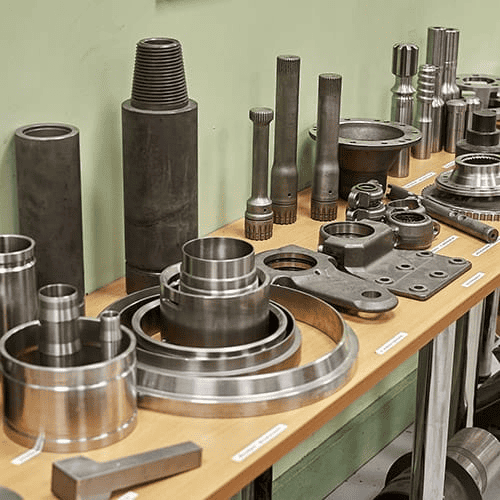In the world of mold and die manufacturing, where precision is paramount, the choice of cutting tools plays a pivotal role in shaping the quality and intricacy of the final products. Carbide-cutting tools stand out as unsung heroes, bringing a level of durability, precision, and versatility that is indispensable to the mold and die industry.
1. Exceptional Hardness and Wear Resistance:
Molds and dies often involve working with tough materials such as hardened steels. Carbide cutting tools, composed of tungsten and carbon, exhibit exceptional hardness and wear resistance. This makes them ideal for the demanding task of cutting and shaping intricate designs on robust materials, ensuring longevity and consistent performance.
2. Precision Machining:
The intricacy of molds and dies demands precision in every cut. Carbide-cutting tools, with their sharp edges and ability to maintain sharpness over extended periods, enable manufacturers to achieve the minute details required for intricate molds. This precision is critical in producing components that meet strict quality standards.
3. Versatility in Material Handling:
The mold and die industry often involves working with an array of materials, including steels, alloys, and non-ferrous metals. Carbide-cutting tools offer versatility in material handling, allowing manufacturers to work with a wide range of substrates without compromising on performance or tool life.
4. Long Tool Life:
Carbide cutting tools boast a longer tool life compared to traditional high-speed steel tools. This longevity is a significant advantage in the mold and die industry, where extended production runs and complex geometries are common. Manufacturers benefit from reduced downtime and increased productivity.
5. High-Feed Machining Capability:
Mold and die machining can be a time-consuming process. Carbide cutting tools, designed for high-feed machining, enable faster material removal rates. This capability is invaluable in reducing cycle times and optimizing the overall efficiency of mold and die production.
6. Thermal Stability:
The mold and die manufacturing process often involves high temperatures generated during machining. Carbide cutting tools exhibit excellent thermal stability, minimizing the impact of heat on tool integrity. This ensures consistent performance even in challenging machining conditions.
7. Surface Finish Excellence:
The surface finish of molds and dies is critical to the quality of the final product. Carbide-cutting tools contribute to achieving superior surface finishes, meeting the stringent requirements of industries where mold aesthetics are as important as functionality.
8. Complex Geometries and Contours:
Creating intricate and complex geometries is a hallmark of the mold and die industry. Carbide cutting tools, with their precision and durability, empower manufacturers to produce intricate contours and complex shapes with ease. This capability is essential for meeting the evolving design demands of various industries.
In conclusion, carbide-cutting tools serve as the backbone of the mold and die industry, embodying the principles of precision and durability. Their exceptional hardness, wear resistance, and versatility make them indispensable in the intricate world of mold and die manufacturing. As the industry continues to evolve and demand higher levels of precision, carbide-cutting tool manufacturers such as Epic Tool will undoubtedly remain at the forefront, shaping the future of mold and die production.
Contact us today to learn about the different types of tooling solutions we offer!


